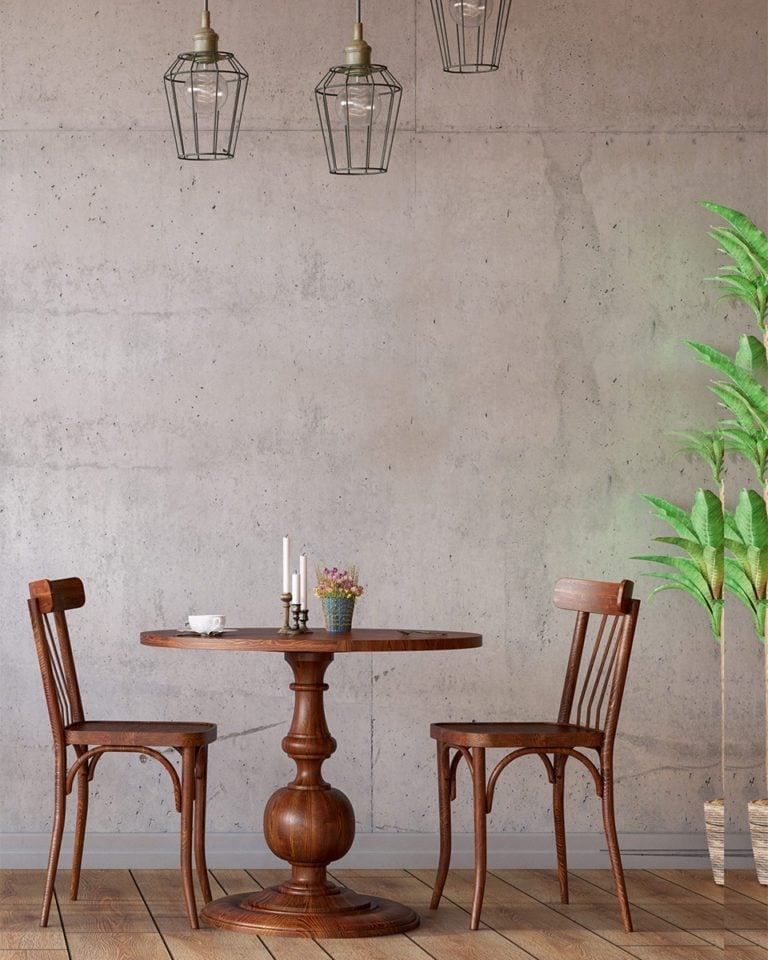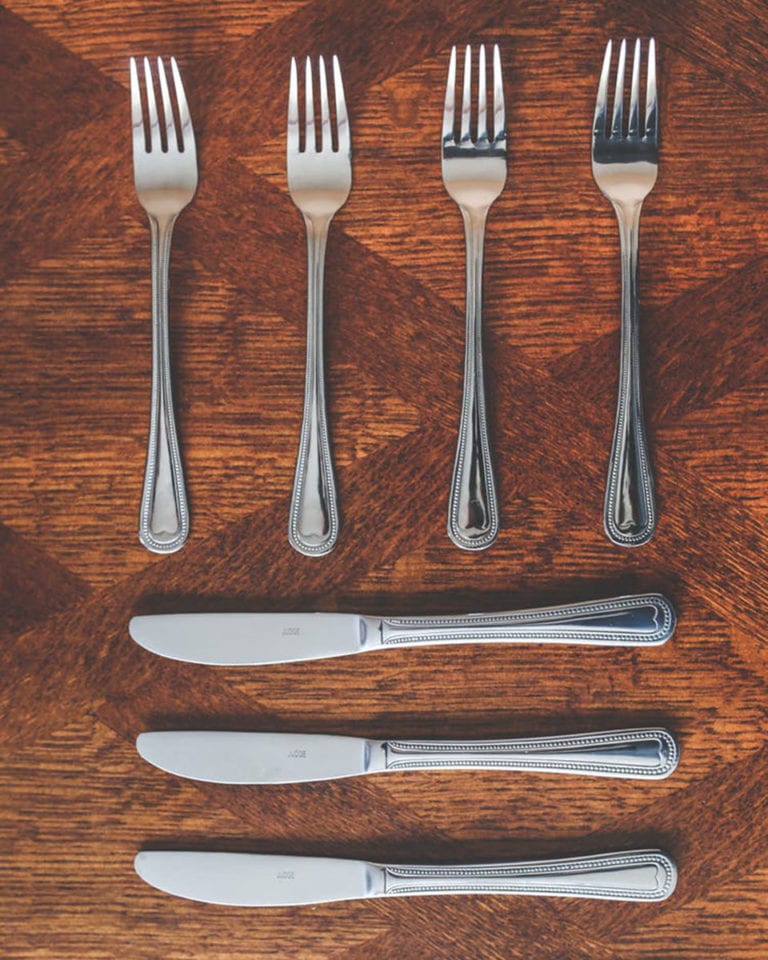Head-banging tunes or serene silence… Is music in restaurants becoming too loud?
It’s probably not the first thing you think of when choosing a restaurant but more and more the music in restaurants – or lack of it – is becoming an important factor. Writer Clare Finney explores the complicated relationship between cooking and music.

Before becoming a chef, Stephen Harris was a financier – but before that he was in a punk band (The Ignerents). The proprietor of The Sportsman in Whitstable, Kent, he often compares creating new dishes with recording and playing in a band. “I’m obsessed with perfect pitch,” he says – and for a second, I’m not sure if he’s referencing his food or his music. As it happens, he’s talking about both – because, for Harris, both are a question of harmony.
“I like things that are right and in balance – the harmonic wave that goes through your head and creates a pleasurable feeling. When finishing a sauce or soup, adjusting the seasoning to get it right, I feel as I did in a recording studio with a graphic equaliser, balancing the elements of a piece of music. Umami is depth – the bass – and the treble is like adding acidity,” he continues. “It makes it brighter” – whether ‘it’ is a sauce or a song.
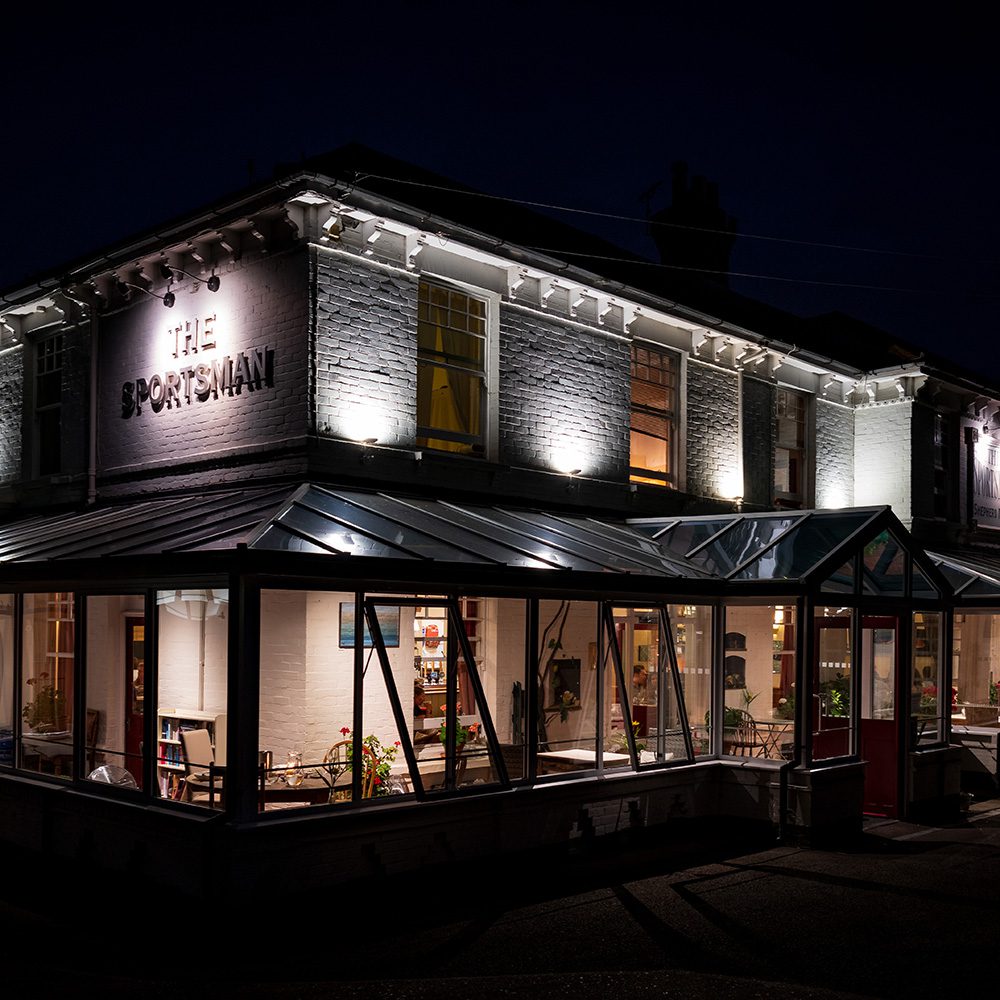
In music, we know what perfect pitch is: the ability to recognise or produce a given note exactly. For Harris the same is true of cooking – “I want everything to taste perfectly of what it’s supposed taste of,” he explains – for a tomato to taste like tomato, no flatter or sharper, just like a perfectly tuned C.
He’s not the only chef to have perceived a connection between music and food, nor the only musician to have turned to restaurants and cooking. Levi Roots is perhaps the most famous, but Graham Garrett of The West House in Kent, Daniel Willis and Johnny Smith of Luca in Farringdon and Amit and Aneesh Patel of Brilliant Corners and Mu in East London were – and in some instances still are – all musicians of some sort, be it producers, drummers, guitarists or DJs.
Menu or playlist?
“I had my first job at St John Bread and Wine,” says Johnny Smith – Fergus Henderson’s restaurant, which famously has no music at all, “but Daniel [Willis] and I were DJing at the same time. When we did Clove Club [a supper club series] at our flats, we brought the two together. We asked producers and DJs to create playlists for us, and that became part of what we did, and what made us different. It was a bit of a revolt against traditional formal French style dining.”
Clove Club became the seismically successful pop up, The Young Turks, with Isaac McHale, which in turn became The Clove Club, their first bricks and mortar restaurant. Opening Luca three years later presented another chance for the trio to weave music into their brand.
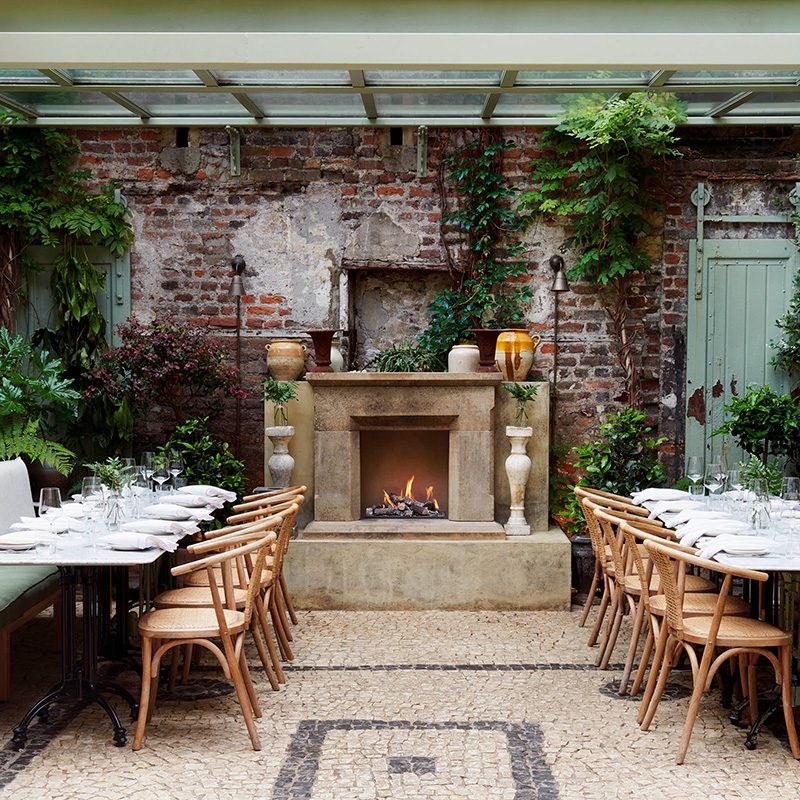
“Luca was different because it was this classic, chic brand which spoke to our Britishness, but also northern Italian cuisine. It’s in Clerkenwell, where our demographic is a little bit older,” Smith continues. “So the soundtrack is, in some capacity, designed for them. This conjured the idea of that golden era of the 50s and 60s, with the crooners, as well as 60s and 70s jazz and funk,” he enthuses. “We built all that into the soundtrack, which we felt represented the space and worked as part of people’s experience, and was in keeping with the quality of the brand.”
In some restaurants, the music is talked about with as much pride as the menus – more, even. “The food we sell is good and considered, but most of the thinking goes into the music,” says Paul Noble, founder of music bar/café Spiritland in King’s Cross. The menu is short and focused on small plates – but that didn’t stop it attracting the eyes (and ears) of restaurant critics, and garnering decent reviews.
For Noble and his business partner Sophie Uddin, sourcing good produce and hiring a good chef was simply about consistency. If you’re going to host some of the best artists in the world on a bespoke sound system, “you want the same quality of drinks and food. That’s how we differ from other music venues”, Uddin explains.
The science of sound
Yet according to professor of psychology Charles Spence, our ability to judge the quality of food and drink is so affected by the music we hear that even if they hadn’t gone to such lengths, critics who liked their sound might still have approved of Spiritland’s food.
That’s not to say the food at Spiritland isn’t really all that; on the contrary, I’ve been for brunch outside and enjoyed it without music. What Spence’s work shows is really what Harris has alluded to: taste and sound sit on a continuum, just like sight and taste, or taste and smell. “If we listen to classical music we rate food and drink as higher quality,” he says – because we tend to associate classical music with sophistication.
There is emerging evidence to suggest loud noises trigger less healthy food behaviours – “perhaps the noise means you can’t really taste what you’re eating” – and that if the music is loud and rhythmic, people will drink about 30% more booze.
“The food we sell is good and considered, but most of the thinking goes into the music”
Increasingly, brands are experimenting with ‘sonic seasoning’; the idea that certain sounds can accentuate certain tastes. The sound of aeroplanes brings out the taste of umami, which may be why bloody marys taste so good on flights, Spence says. And there are ‘sweet’ notes, which make food taste sweeter than it is. A few years ago, Spence worked with a chef in Islington to create two soundtracks that could bring out either the bitter or sweet notes of a dark chocolate pudding. “Guests could listen to them on their mobile phone.”
What’s most interesting about Spence’s discoveries isn’t the precise pairing of flavours and notes, but the general shift towards embedding sound into the identity of a restaurant, and what that means for the diners.
Rhythm of the kitchen
At the late Russell Norman’s Brutto, just down the road from Luca, the music is identifiably Indie and Eighties hits. At many restaurants it’s jazz, piano or the kind of French music that gives you the feeling you’re in a film. Most people want some sort of background noise when eating.
“When it’s the bustling clatter of cutlery and glassware, like at the Wolseley in the good old days, you really feel the restaurant space,” says food writer Mike Daw – “but then I also love it in Naughty Piglets or Darby’s when they play some belters and I’m firing up [the music identifier app] Shazam. It depends on the restaurant.”
When music grates, we assume it’s too loud – but often it’s just out of step with the nature of the place we’re in. At FKABAM (Formerly Known As Black Axe Mangal), owner Lee Tiernan – interestingly also a former St John employee – plays famously raucous playlists at a volume he’d be asked to turn down in any other restaurant.
He gets away with it because of the food he serves, the space he’s in and because of who he is: a tattooed south Londoner serving pig’s tails and offal flatbreads in a tiny dark restaurant on Highbury Corner.
“Black Axe Mangal started at the back of a nightclub in Copenhagen, so people would be moshing to Metallica while waiting for their food. The vibe felt right, and that’s how we wanted to continue when we opened here. St John is my favourite restaurant, and the murmur of the dining room is a fantastic sound,” says Tiernan, “but I didn’t want to do a carbon copy of St John.”
“The rise of the open kitchen, food programmes on TV and other media have put the chef at the forefront,” Spence says, elevating them to the status of “rockstars or artists. They’re freer, as artists, to make beautifully plated food, and maybe that gives them the confidence and the right to go beyond the kitchen and show their good taste extends to music too.”
Obviously, this leads to what Spence calls “sonic branding”, in restaurants as much as in retail – and there’s been customer demand for it. “There are a generation of people now who are used to music, who love different types and love food,” Harris observes. “The idea of experimenting with it to create a certain mood – I can only see it happening more.”
Silence is golden
For one man – indeed many men and women around the world – this has not been a wholly welcome development. In 2018, founder of the SoundPrint app Gregory Scott was trying to date in New York and found he was struggling to hear his companions in the city’s loud restaurants and bars. Scott suffers from hearing loss, as do 20% of the world’s population – but when he started compiling lists of quiet venues, even going so far as to measure noise levels with a decibel meter, interest grew far beyond those with hearing issues.
“A lot of people want to be able to converse without straining to hear. It’s exhausting, and once one table starts raising their voices, the next table does too, and the next table and the next table – raising the sound from two to five decibels.” Of course, some people want loud music, he acknowledges. “They aren’t going to use the app.” But the speed and scale of SoundPrint’s spread around the world – there are curated quiet lists for 22 major cities and counting – suggest many people are unhappy with current levels of restaurant noise.
And justifiably so. According to a random survey by Soundprint in 2022, 80% of London’s restaurants were too loud for conversation. The RNID, a charity supporting deaf people, pointed out that in many instances the noise levels were comparable to a lawnmower or motorbike, while half those measured were louder than a vacuum cleaner at peak times.
Against this noisy backdrop, the growing trend for restaurateurs to marry their love of food with their love of music seems counterintuitive – even selfish. Almost every diner I surveyed for this feature preferred background music to a banging playlist. Yet according to Smith, Noble and even Scott, the problem is often not the music itself, but the acoustics of the dining room, and the way the speakers have been installed.
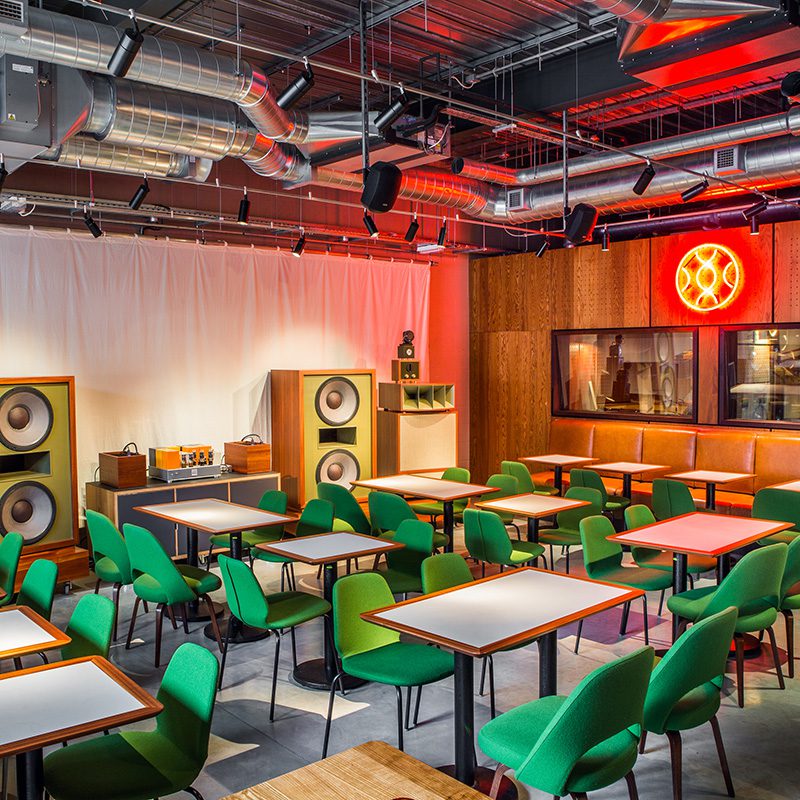
The fashion for opening restaurants in post-industrial spaces hasn’t helped, says Scott. Abandoned factories and railway arches aren’t famed for their noise absorbing qualities. But there is also “a swathe of venues spending lots of money on speakers, without treating the room acoustically”, says Smith, with sound panels, soft furnishings and so on. The fetishisation of vintage speakers and sonic identity means sound is “incorporated into the concept by people who don’t understand how music and sound work”.
“One of the main things people fail to think about is a sub-woofer. When you feel the sound come through the floor, through your legs, that does a lot of the heavy lifting in terms of experiencing that sound,” Smith continues – to the point where diners can enjoy the music almost without consciously hearing it. In Spiritland, the quality of the system and installation, combined with the acoustics, is such that even when it’s turned up “you can still easily converse”, says Noble.
That’s the point of eating out, after all: to enjoy good food and good conversation. It’s easy to forget that amid all the noise around identity, branding and, well, noise. “Music is nice when it creates a mood and doesn’t alienate anybody,” Harris says simply. As with the food, it’s all about balance: bringing people, place and taste together, and striking a chord (or not, as the case may be).
Places where they crank it up
The Cartford Inn, Lancashire
Owner Juliez Beaume loves live music. “If I’m out and about and I hear a good singer, I’ll get them in,” she says. “We have a David Bowie, a rockabilly singer, a girl who sings and plays double bass and a saxophonist…”
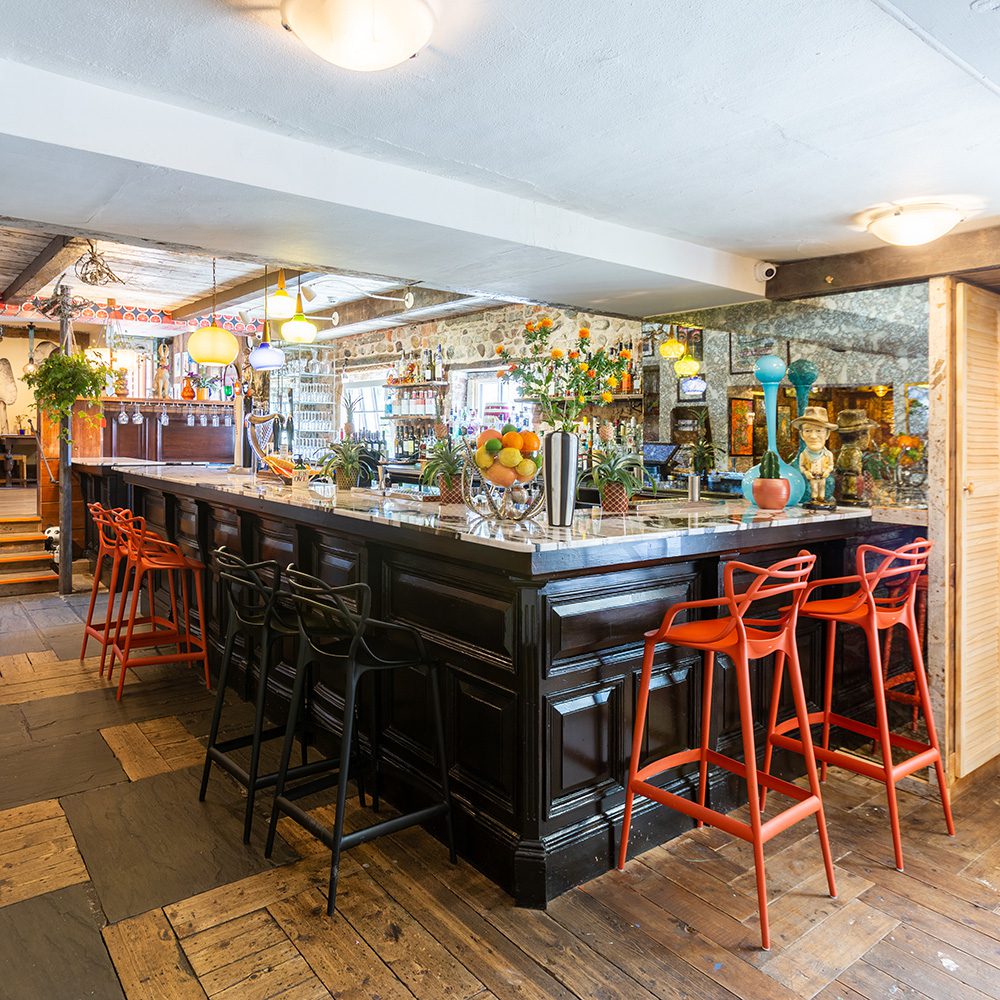
Leroy, London
It’s the spot to have a drink and a bite after work, and complain about colleagues knowing you won’t be overheard.
The Wilderness, Birmingham
Chef Alex Claridge serves provocative, playful tasting menus in a restored factory against a soundtrack of rock, punk and heavy metal.
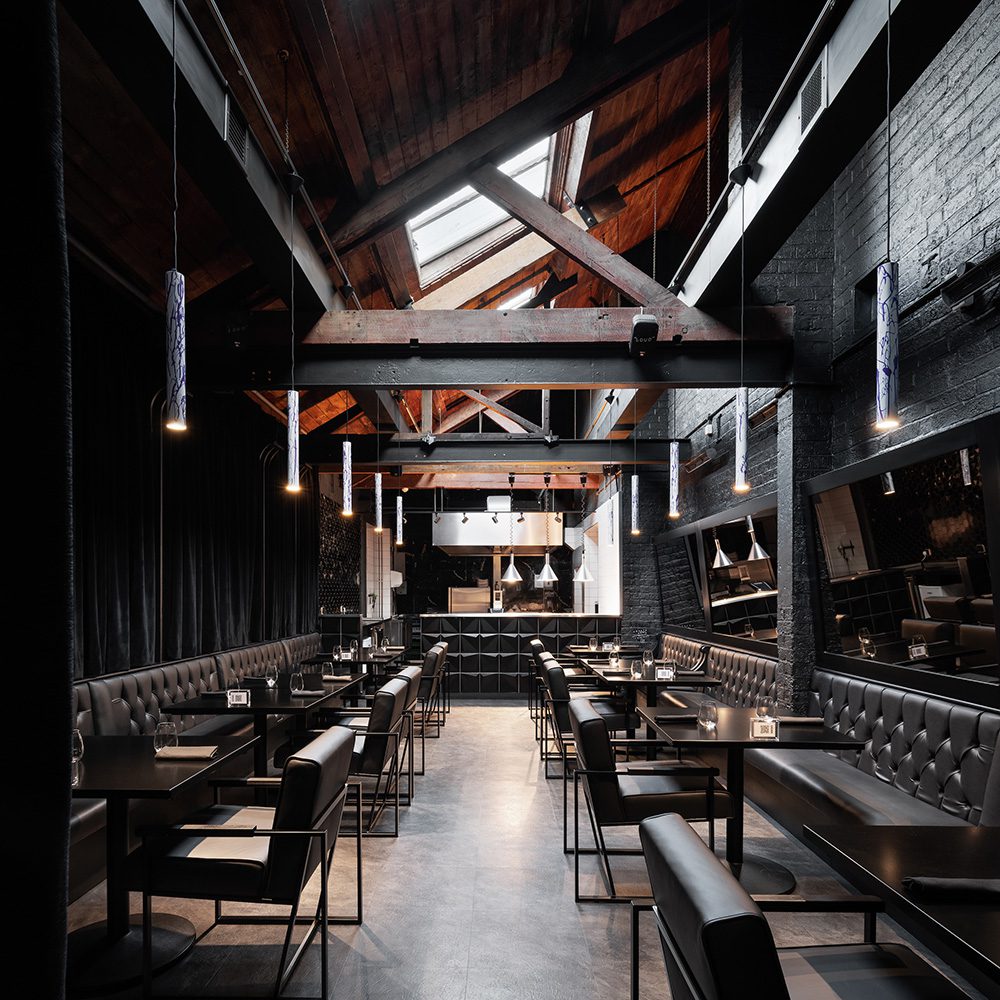
FKABAM, London
There’s no set soundtrack at this inimitable Islington restaurant, but it’s very good, very loud and very in-keeping with the big flavours.
Ynyshir, Wales
Two Michelin stars and an in-house DJ banging out the tunes make a memorable night – but not one that, as the website says, is appropriate for ‘that intimate first date’!
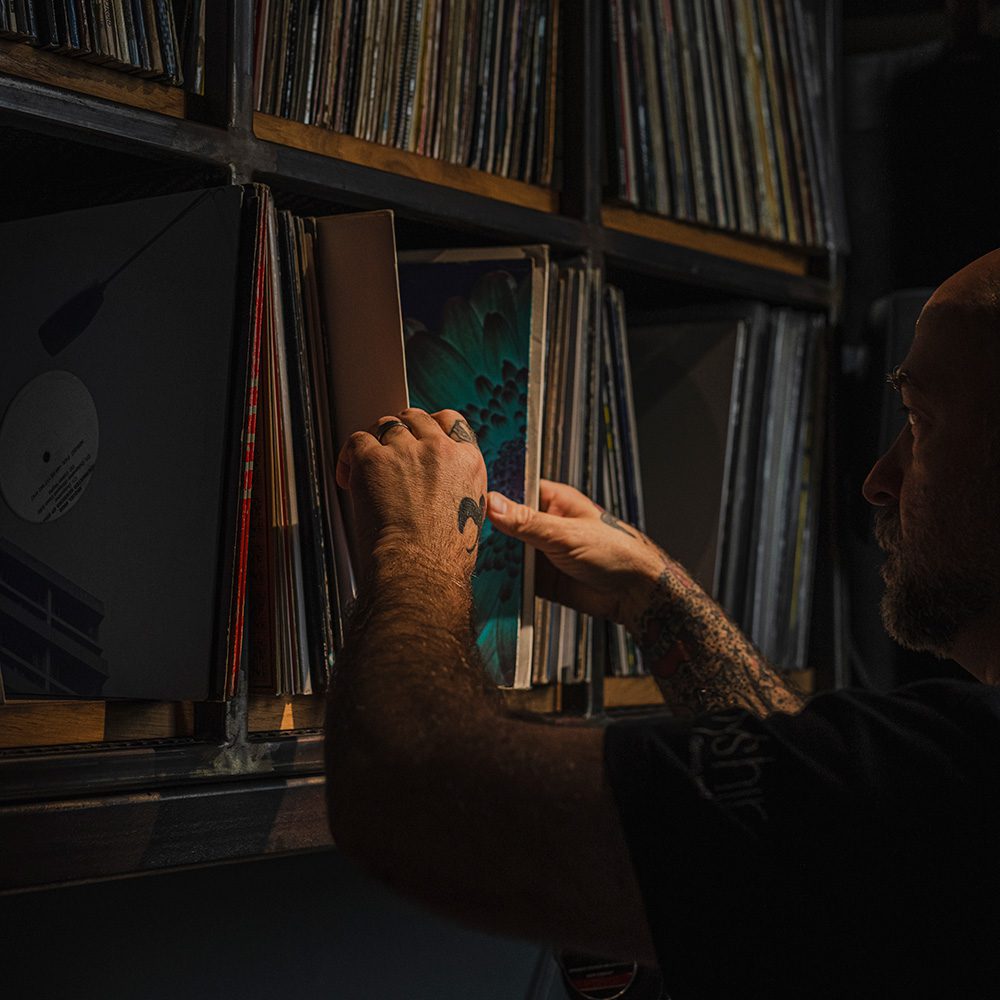
Walcot House, Bath
Set in an old bakery, this restaurant marries elegantly served, locally sourced food with an array of equally elegant artists.
Restaurants to dine in peace
Toklas, London
From the founder of Frieze Art Fair and as beautiful as you’d expect in terms of atmosphere and food, as well as art on the walls.
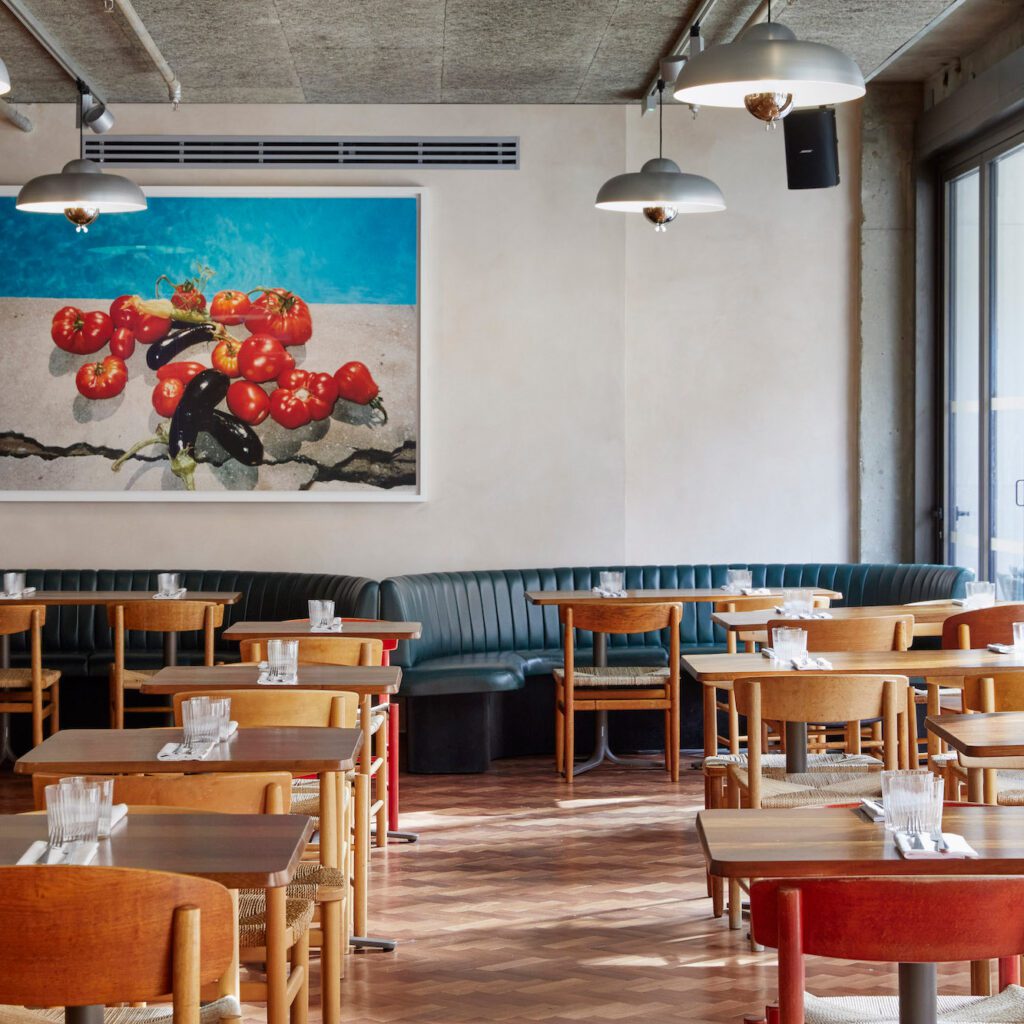
L’Enclume, Cumbria
Simon Rogan’s legendary establishment in a 13th-century former forge is a thick-walled temple to high-art dining amid a reverent hush.
Noizé, London
Noizé by name but not by nature. This rustic, slightly quaint French restaurant in central London offers typical-with-a-twist fare.
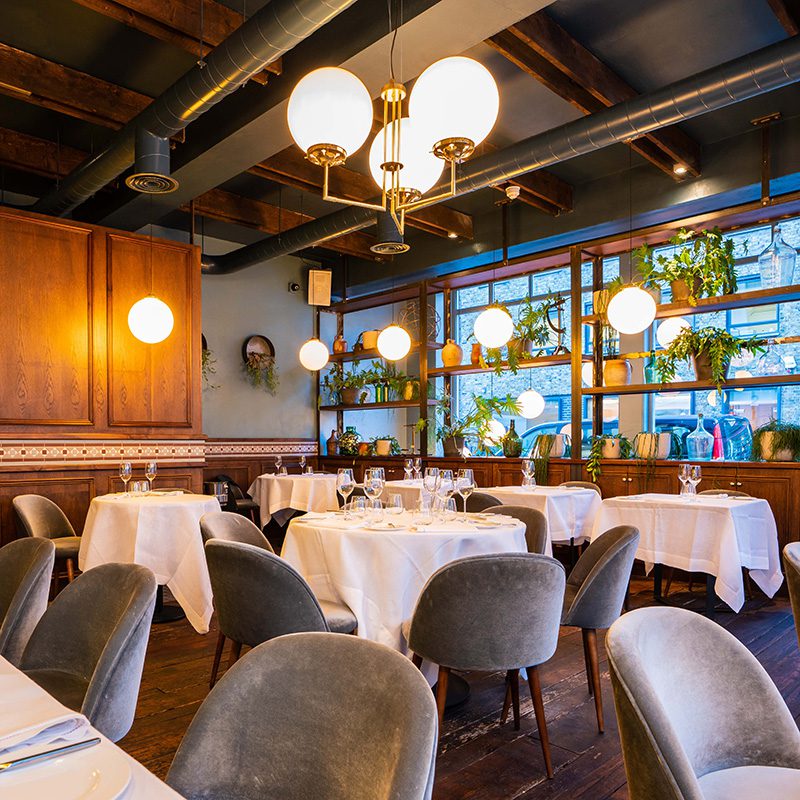
Moor Hall, Lancashire
A Michelin star-studded restaurant from Mark Birchall serving hyper-local, delicate cuisine in a beautiful dining room of wood, plants and soft stone.
Robert and Victor, Manchester
Sourdough sandwiches filled with ingredients locally sourced from Cheshire and Lancashire – highly rated by SoundPrint app users.
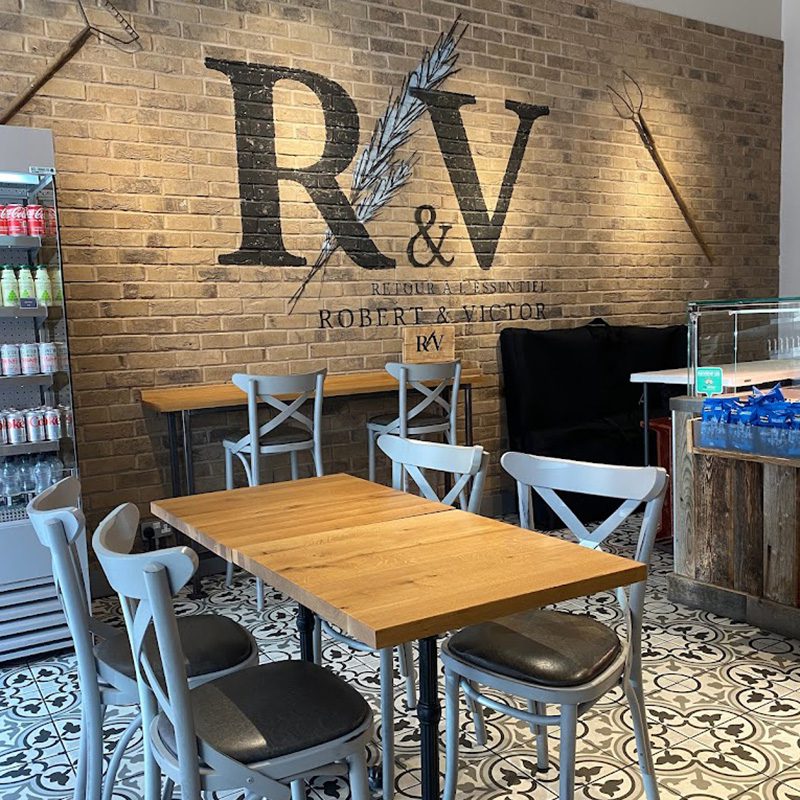
Where The Pancakes Are, London
Pancakes, of course – but much, much more is served in this popular brunch spot (three outlets in the capital), which is busy – but not so buzzy you can’t have a good chat.
Discover recipes straight from the hottest restaurants in our chef recipes collection.
Subscribe to our magazine
Food stories, skills and tested recipes, straight to your door... Enjoy 5 issues for just £5 with our special introductory offer.
Subscribe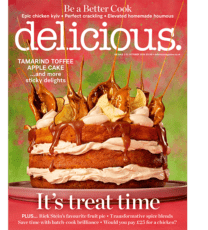
Unleash your inner chef
Looking for inspiration? Receive the latest recipes with our newsletter
